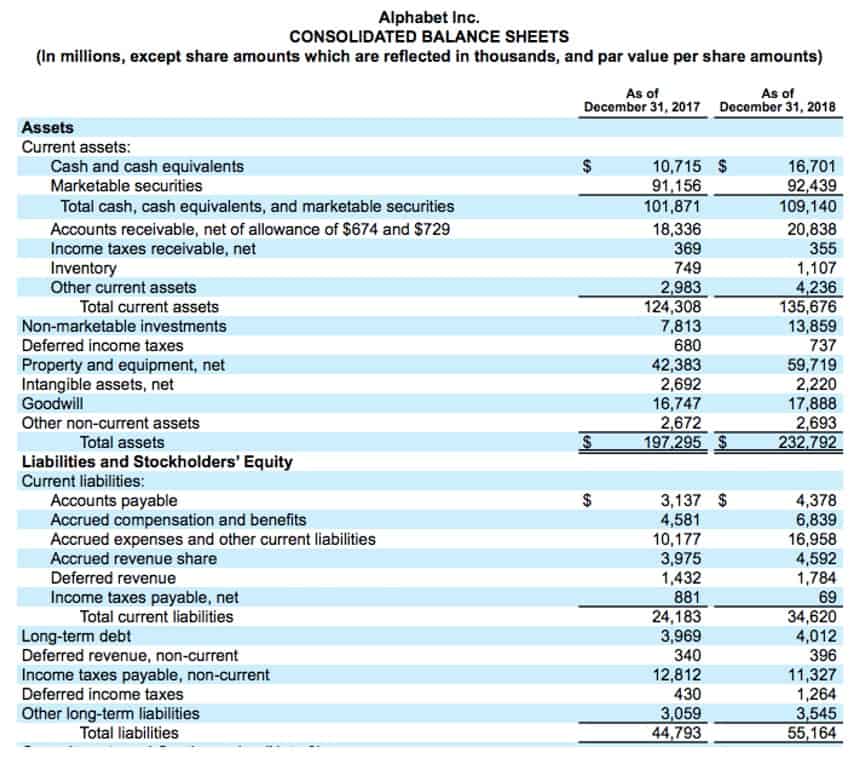Content
- Features of the Single Entry System
- Double Entry Accounting — Excel Template
- Double-Entry Accounting Software
- Example of Double Entry Accounting
- Difference Between Single Entry and Double Entry System
- Who uses single-entry accounting, Is it fit for your business?
- What Is the Definition of Single-Entry Bookkeeping?

All changes in our assets , liabilities and owner’s equity are accounted for. Larger companies have to use double entry book keeping systems as they are usually bound by legislation to report their financial results for transparency and many other purposes. These statements are primarily prepared for company’s shareholders but different stakeholders like government, lenders, and potential investors also use them according to their needs. If you want to keep track of asset and liability accounts, you want to use double-entry bookkeeping instead of single-entry. However, when compared to a single entry system, the double-entry system is the more effective technique for recording accounts. In today’s times, double-entry bookkeeping is the most common and effective data entry method. As per Generally Accepted Accounting Principles , all big organisations use double entry systems instead of single-entry systems to keep track of its finance in all companies.

The only stipulation is that the transaction log must contain enough information for tax reporting purposes. In single entry system, incomplete records are maintained while in double entry system complete recording of transactions is there. Double Entry System is the scientific method of keeping financial records, developed by Luca Pacioli, in 1494. This system is based on the principle of duality, i.e. every transaction has a dual aspect. Each transaction affects two accounts at the same time, in which one account is debited while the other is credited. This method of keeping records is primarily used by a sole proprietorship and partnership firms.
Features of the Single Entry System
For example, if your business buys or sells on credit, then you need to implement a double-entry system. In the interim, the business could have been mistakenly spending money it didn’t have. However, businesses have to keep a detailed accounting of their financial transactions. The survival of the business depends on the owner’s ability to establish good accounting practices.
- However, when compared to a single entry system, the double-entry system is the more effective technique for recording accounts.
- So, any information whenever required of whichever year is easily available.
- All subsequent transactions must be passed through the journal and posted into the ledger according to the principles of the double entry system.
- The complexity and number of transactions play a vital role in determining who adopts single entry system and double entry system.
- To record the financial transaction of the business, it is necessary to use a well-defined structure or system.
Since small firms do not have single financial capabilities and resources, entry accounting is suitable. On the contrary, for large firms, it is necessary to have a double-entry accounting system. Single-entry transactions are simple and do not require detailed knowledge of accounts, whereas double-entry transactions require expertise. This system does not track assets in terms of keeping recording or tracking.
Double Entry Accounting — Excel Template
In addition, it can be used to derive the profits generated by a business in short order. Equity – The equity is equal to the assets of single entry vs double entry bookkeeping a business minus its liabilities. It shows how much money would be left for owners if all their financial obligations were paid off.
- For instance, if you sell inventory, you’ll have an inventory account, which is a type of asset account.
- Double-entry bookkeeping provides a sophisticated way to record your transactions and requires skill and expertise to accomplish — but don’t let that deter you from using it.
- In a single entry system, only single entry is recorded which can be either debit or credit transaction.
- Mr. John, who keeps his books using the single entry system, has told you that his capital on 31 December 2019 was $40,500, and on 1 January 2019, it was $25,800.
It records both the debit and credit aspects of the transaction. Accounts Maintained It maintains personal accounts of debtors, creditors and a cash book for the recording of transactions. It maintains personal, real and nominal accounts for the recording of transactions. Used by Single entry system is mainly used by small business firms and partnership firms. The Double entry system is can be used by both small and big business firms for recording the transactions.
Double-Entry Accounting Software
The parties receiving the benefit will be debited, and the one giving the benefit will be credited. Hence, every debit of an amount will have a credit effect with the same amount and vice versa.
What are the types of single entry?
- #1 – Pure Single Entry.
- #2 – Simple Single Entry.
- #3 – Quasi Single Entry.
- #1 – Assets.
- #2 – Audited Statements.
- #3 – Increased Risk of Errors.
- #4 – Performance Analysis.
- #5 – Incomplete Records.
Double-entry accounting is a more accurate and detailed methodology, which provides business owners with a precise, verifiable overview of their company finances. Double entry is more robust and complex than single entry, it provides more information, and it helps to lower the risk of financial mistakes. Business owners can utilize accurate accounts and reports to make decisions and take the guesswork out of making financial plans. Unlike single-entry accounting, double entries cover liabilities and assets. Single-entry bookkeeping is a good approach for small businesses.
Example of Double Entry Accounting
And, it makes it really hard to run your company, because you’re only recognizing expenses when they happen, and you’re only collecting revenue when they happen. This makes it really difficult for investors or even you to do any kind of analysis and know what’s happening in your company. Typically, double-entry bookkeeping is better because it is more accurate and can be used to determine the financial position of your business. If your goal is to grow your business, it’s better to start with the double-entry system so you can add different accounts to your books as you grow. However, you may need to hire or outsource a bookkeeper if you choose this method to ensure it’s done correctly. Due to two-fold effect, the system possesses completeness, accuracy as well as it matches with the Generally Accepted Accounting Principles . The procedure starts from source documents, followed by the journal, ledger, trial balance, then at the end financial statements are prepared.
- But, through a single-entry approach, you’re only going to see that one time, and you’re going to see the cash flowing out in April.
- Double-entry accounting is a more accurate and detailed methodology, which provides business owners with a precise, verifiable overview of their company finances.
- If at any point this equation is out of balance, that means the bookkeeper has made a mistake somewhere along the way.
- This means that the dual entry system of bookkeeping helps the enterprise to determine its financial position.
- When utilizing double entries, accountants and businesses track transactions, providing information about each transaction to balance company accounts.
- Luca Friar Pacioli is known as the originator of the Double entry system.
As we said at the beginning, single-entry books work best for small, uncomplicated businesses with limited transactions and thus, complexity. Unfortunately, it doesn’t allow you to track assets and liabilities and to develop a balance sheet. Double entry system of bookkeeping is a technical affair that requires skilled personnel to implement. High costs are involved when hiring trained people such as trained accountants to help in the complicated method of recording financial transactions.
Difference Between Single Entry and Double Entry System
Chatting with your trusted financial professional is always the best way to get specific advice on growing your own business. The double-entry system of book-keeping is considered as a scientific method of book-keeping. It records two aspects namely giving aspect and relieving aspect of the business transactions. A T-account is an informal term for a set of financial records that uses double-entry bookkeeping. The double entry system is necessary for auditing financial statements necessary for the checks and balances of each account. Even if one wants to do it, they will have to convert the single entry to double entries and balance it for auditing.

Single-entry accounting is the alternative method to double-entry accounting for recording financial activities. Single-entry accounting resembles a list of transactions in a check register or bank statement. Single-entry accounting and double-entry accounting closely map to whether companies use cash-basis accounting vs. accrual accounting.
Take a read of the article provided to you, so as to understand the difference between single entry system and double entry system. Double-entry provides a more complete, three-dimensional view of your finances than the single-entry method ever could. Increase a liability or equity account, or decrease an asset account. Double-entry bookkeeping is a system of recording all the financial transactions that are completed by an individual or company. Through this method, two entries are written for each transaction to ensure there are no errors in calculations.

Under this approach, a sequence of steps is adopted, as described in this https://www.bookstime.com/ section. That is to say, nominal accounts and real accounts are not kept.
The cash book and journal should be used under the single entry system. The ledger is not generally used in this system, although it may be used to record the totals of certain account heads. If the books of a business are maintained under the single entry system, then profit or loss cannot be calculated using the trading account and profit and loss account. Given that the records are not kept under the double entry system, they are considered incomplete records. The single entry system is a bookkeeping system in which, sometimes, both aspects of a transaction are recorded, whereas other times, only one aspect of a transaction is recorded. The chart below summarizes the differences between single entry and double entry accounting. The debits and credits are tracked in a general ledger, otherwise referred to as the “T-account”, which reduces the chance of errors when tracking transactions.
For example, the bad debt provision for the current year is to be reduced to 20%, and the creditors of Rs. 2000 have wrongly recorded as debtors. So, firstly there has to be the deletion of the extra Rs. 2000 from the debtors, and then the debt provision entry is to be done. In a double-entry accounting system, with each transaction, one account will be debited, and another account will be credited. Double-entry accounting has many advantages and is best for most businesses. Also, considering the amount of accounting software available today, double-entry accounting is not nearly as difficult as it used to be. If the debit and the corresponding credits for each transaction add up to zero, the business’s books remain balanced.
Preparation of the profit and loss account cannot be prepared through the information assembled through the single entry system. This means that this system cannot help the organization to determine its financial position.
How do you write a bookkeeping single-entry system?
- Begin with the previous balance. Record the previous existing balance in the first line of the starting balance row.
- Document revenue and expenses. Fill in the table with revenue (income) and expenses, using one row per transaction.
- Calculate the ending balance.
Harry has cleared his account with his creditor, John after he paid $1000. This transaction is recorded by Harry by reducing the liabilities account after clearing his amount and debiting the accounts payable by $1000 and crediting the cash as the cash account is reduced. Examples of asset accounts are cash, accounts receivables, Equipment and inventory account. The asset account increases when there is an influx of assets and decreases when assets are reduced. There are usually 10 steps of a complete accounting cycle and all steps require the use of double-entry accounting. For example, one of the steps of the accounting statements is to journalize entries for transactions, which involves the use of the double-entry system as two entries are recorded.
As mentioned in the previous point, that limited accounts are opened, and the books are scarce, expenses to maintain these accounts are also limited. A statement of assets and liabilities on a given date must be prepared. Under the prospective effect, the conversion takes place from the date on which the arrangements are made for conversion. This ensures that the books can be maintained under double entry system in the future. When a business grows rapidly, then at some future point, the single entry system will no longer be workable. In such situations, the single entry system should be converted into a double entry system.
The double entry system of recording financial activities is used by both small and significant business enterprises. Large organizations are required to use double entry system to record their transactions because this method ensures accuracy.
What Is the Definition of Single-Entry Bookkeeping?
Although it best fits small businesses, that doesn’t mean there aren’t advantages–simplicity is the most effective form of sophistication. When starting a business, one of the first decisions you’ll need to make is how you’re going to record your transactions. There are two methods of bookkeeping, the single-entry and double-entry. Starting out with double-entry bookkeeping, even when your business is small, is the best long-term plan.
A single entry system of accounting is a form o bookkeeping in which each of a company’s financial transactions are recorded as a single entry in a log. It is a necessity given the complexity and volume of their business. When choosing accounting software, companies should look for features such as real-time data access, advanced analytics tools and accelerated closing processes. Let’s explore some real-world examples of double-entry accounting for common business transactions. Each scenario uses a typical journal entry style that lists the account names, debits on the left, credits on the right and a memo below. The financial position of a company can be distorted- by human error.